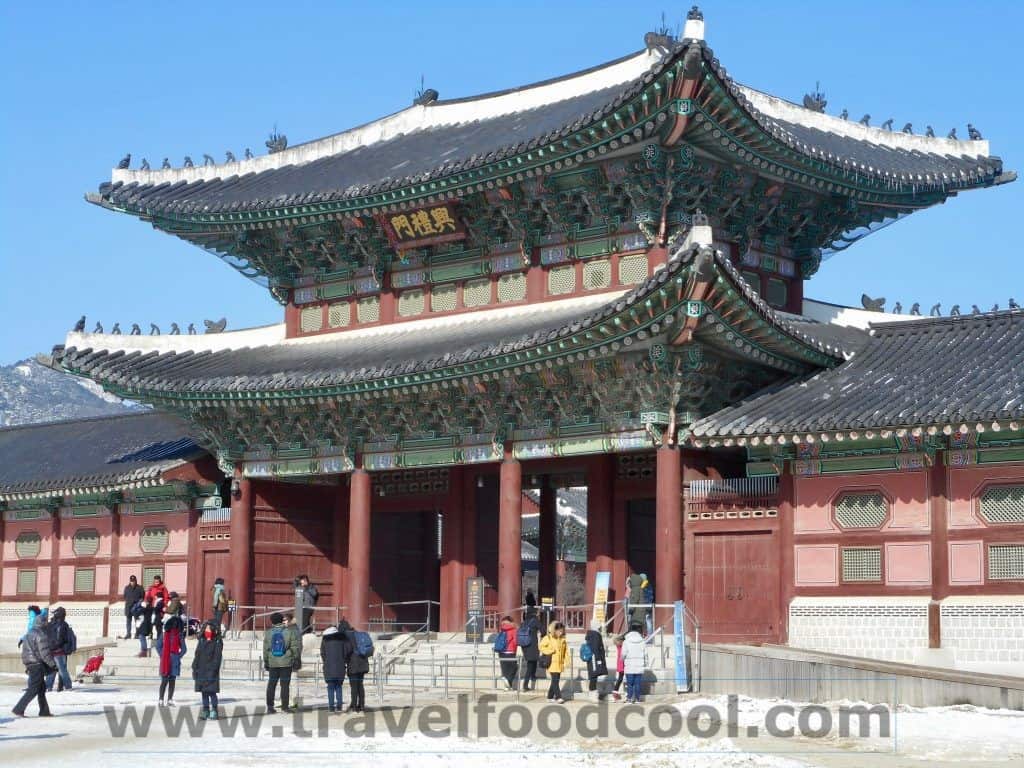
Happy Valentine’s Day! Today is a day to treat your partner like royalty! Men, if you were in South Korea today, you would be receiving chocolates from women as a sign of affection.
Speaking of South Korea, has everyone been watching the Olympics? We are well into the first week of the Winter Olympics which are taking place in PyeongChang, South Korea. (An interesting side note on PyeongChang: the name was tweaked from the original name of Pyeongchang to capitalize the “C”. Why the emphasis on the “C”? They wanted to try to distinguish it from North Korea’s capital city, Pyeongyang.) For some, this is their first glimpse of the beauty of South Korea. For Pete and me, it’s been a great flashback to our far east trip last year that started in Seoul, South Korea. Missed the post from a few weeks ago? You can catch it here.
On an extremely cold (-10C) wintery day, after flying fourteen hours and adjusting to a 14-hour time difference, Pete and I ventured out to visit the Royal Palace in Seoul, Gyeongbokgung. The Palace, whose name means “The Palace of Shining Happiness” or “Palace Greatly Blessed by Heaven” or “The new dynasty will be greatly blessed and prosperous” (depending on who you listen to), has certainly seen its fair (and unfair) share of ups and downs.
Since first being built (1392-1394), it has been burnt down three times, once in 1553, once during the Japanese invasion of 1592 (where it was left derelict for 273 years and finally rebuilt on a grand scale with 500 buildings in 1867) and once again during the Japanese occupation of Korea, 1910-1945. The palace was largely torn down during this time of Japanese occupation and, in 1915, 90% of the palace buildings were dismantled under the pretense of making space for a major exhibition. Since 1990, there has been an all-out effort to restore Gyeongbokgung to its former glory.
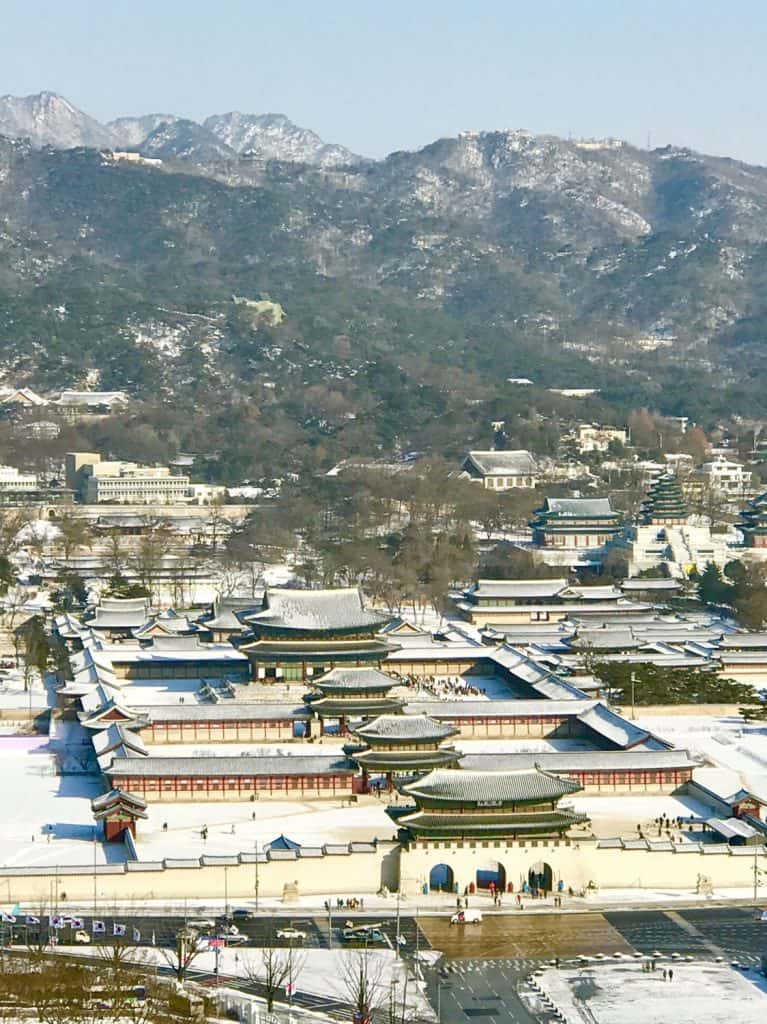
To enter Gyeongbokgung, you must walk through the imposing South Gate. The Royal Palace is unique, as it is the only one of the palaces in Seoul that still has all four major gates remaining. The Bugaksan Mountain in the rear gives the view an additional layer of drama.
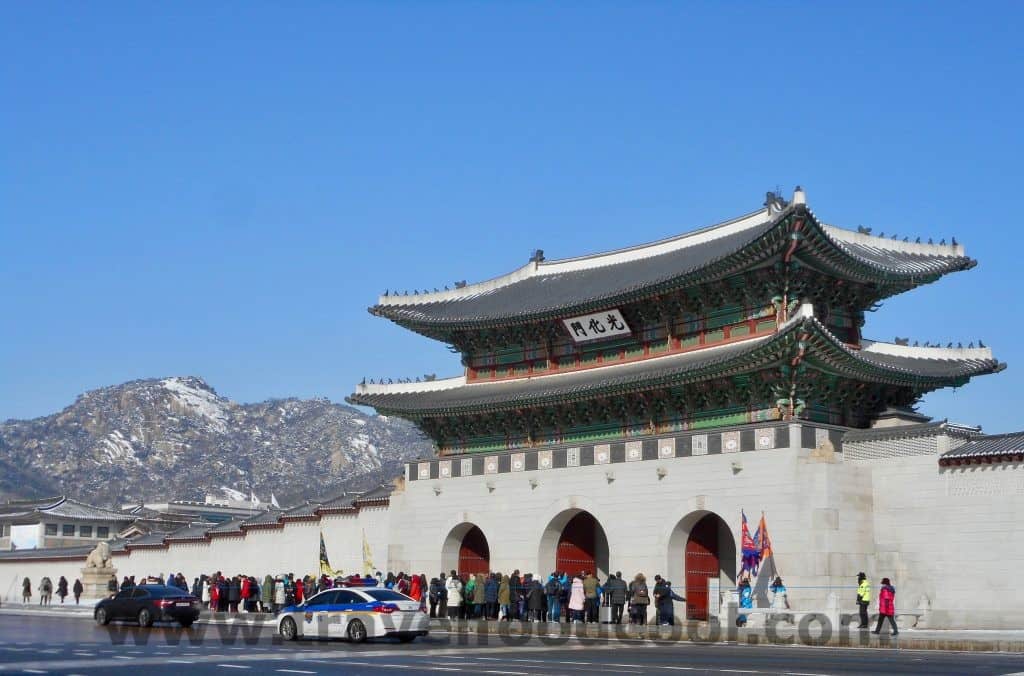
The South Gate is complete with Royal Guards who protect the Palace. We were lucky enough to see the changing of the Guards ceremony (occurs four times a day).
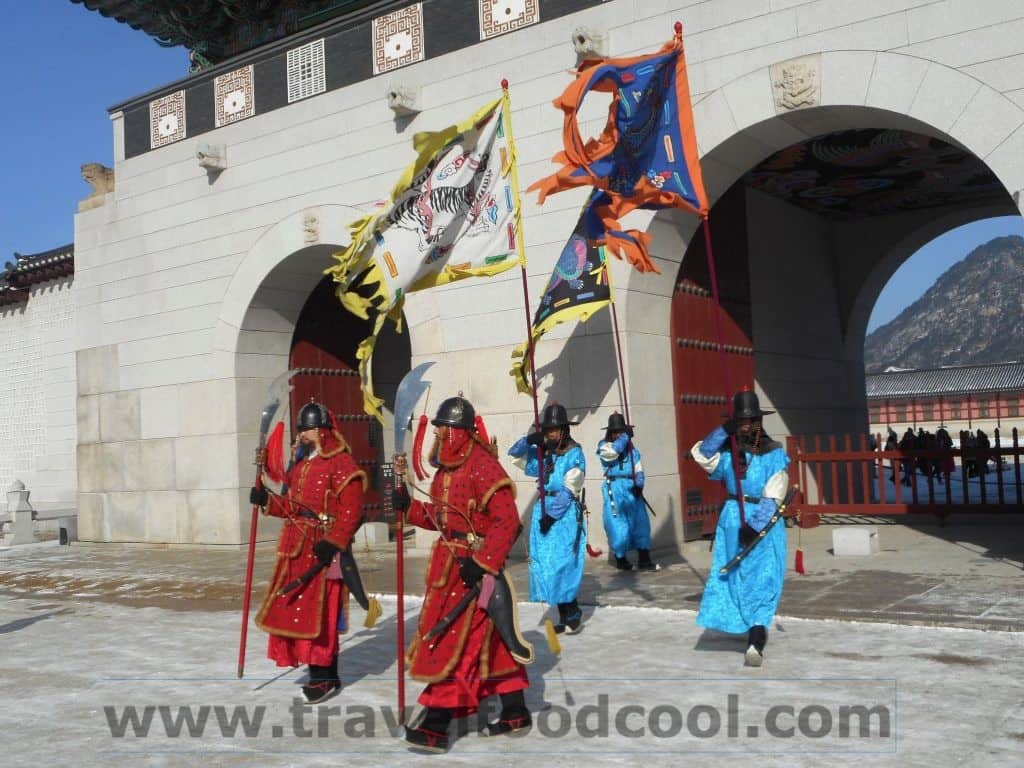
This ceremony, like all changing of the guards ceremonies, was full of pomp, majesty and colour. This ceremony originated in 1469 and the one you see today, which started in 1996, reenacts the same protocol and steps.
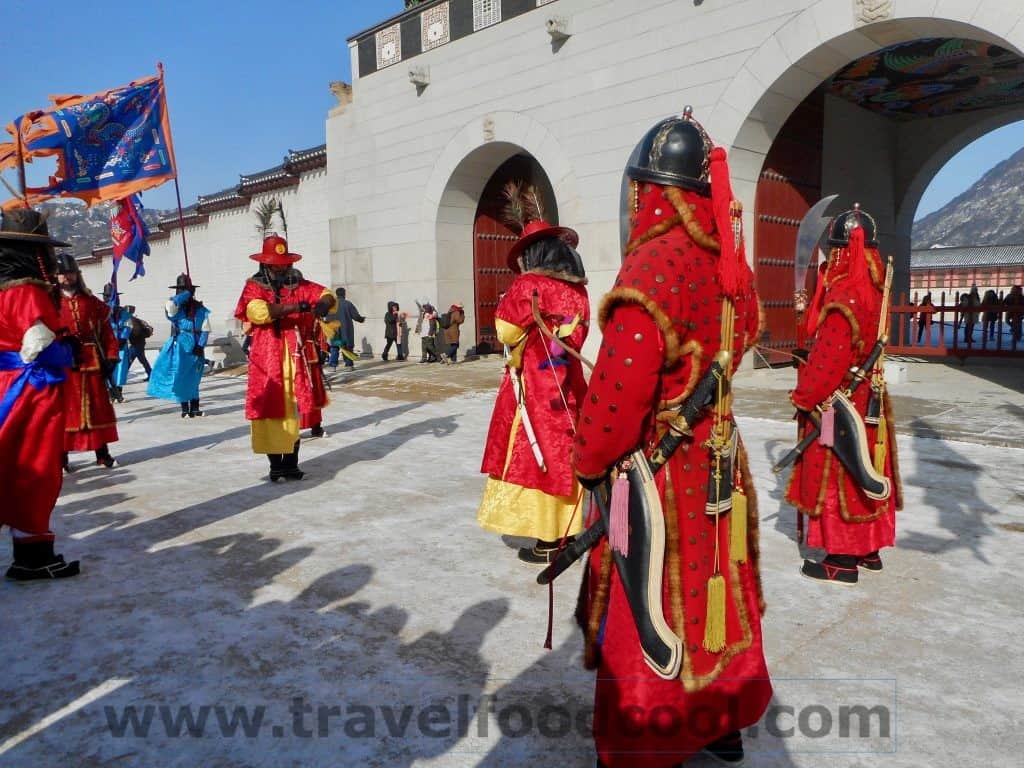
The front courtyard is where visitors buy tickets for KRW3,000 (about $3.00). Here, we also met Sandy and Jeongeun, who are 17-year-old school girls, volunteering to give free palace tours. (They receive school credits for doing this.) We set off with Jeongeun and Sandy on our tour to learn about the palace.
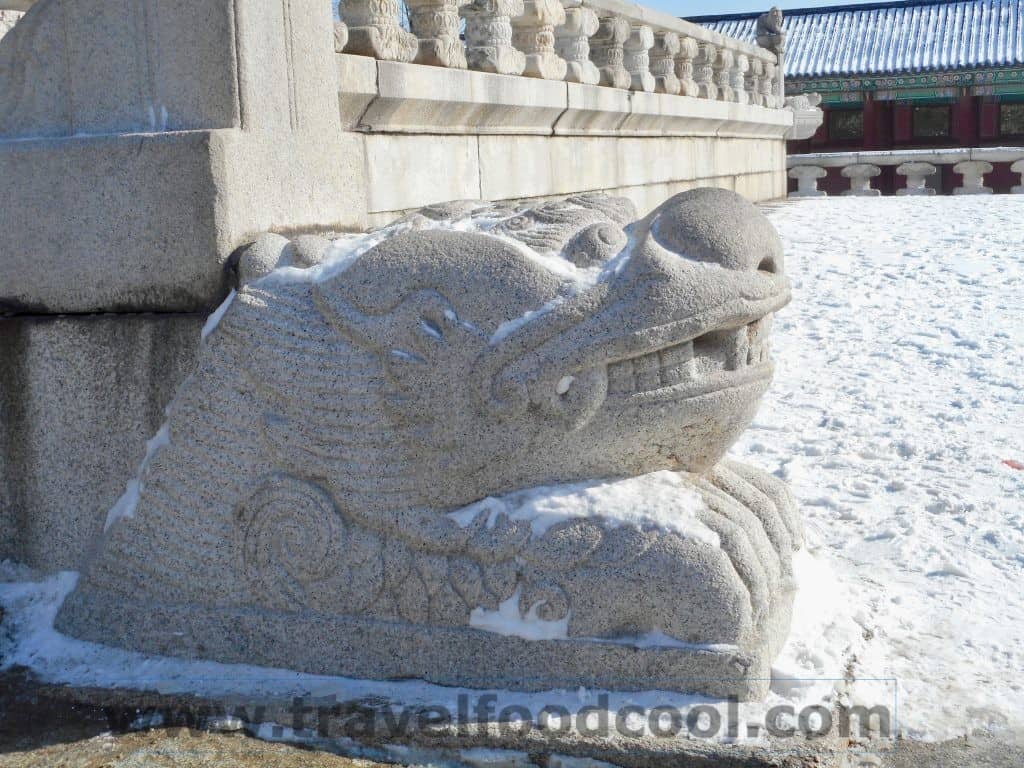
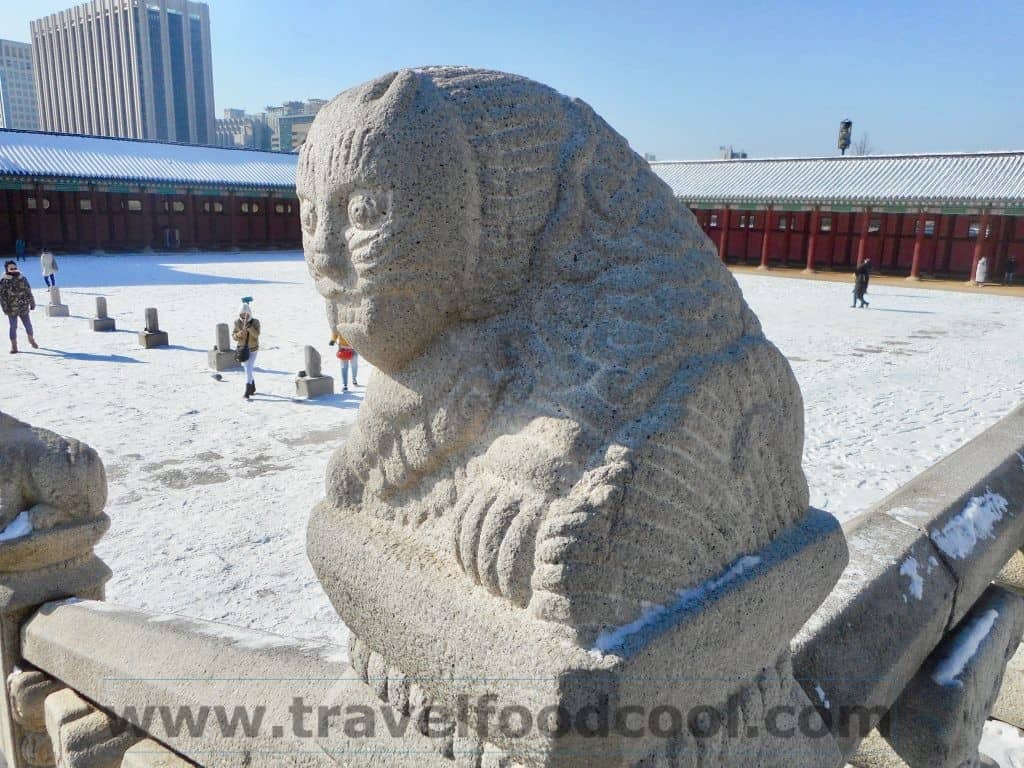
To start, one follows three rows of unevenly paved stone. We would had to have walked on the outer stones in the past, as walking on the centre set was reserved for the King. Why are the stones uneven? Jeongeun explained that it was to prevent people from sleeping on them.
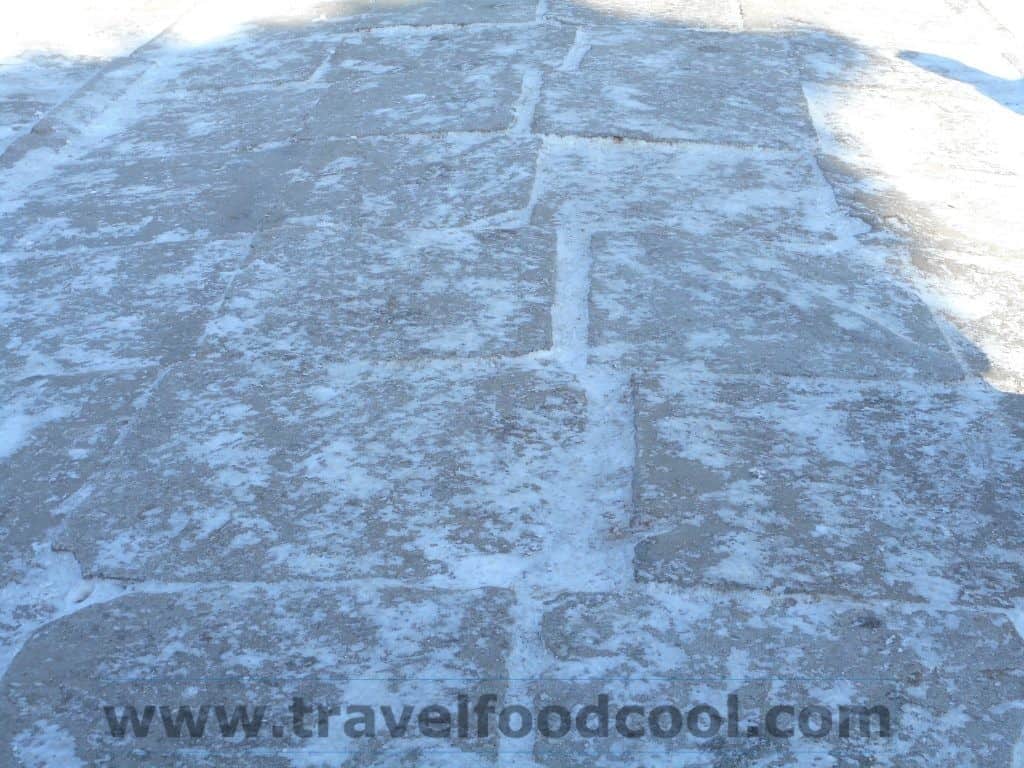
Walking up to Geunjeongjeon Hall, the Throne Room, you pass a series of imaginary stone statues which were placed there to ward off evil. There are also two phoenix plaques that the King would pass over as he was carried in his carriage. The phoenixes symbolize long life.
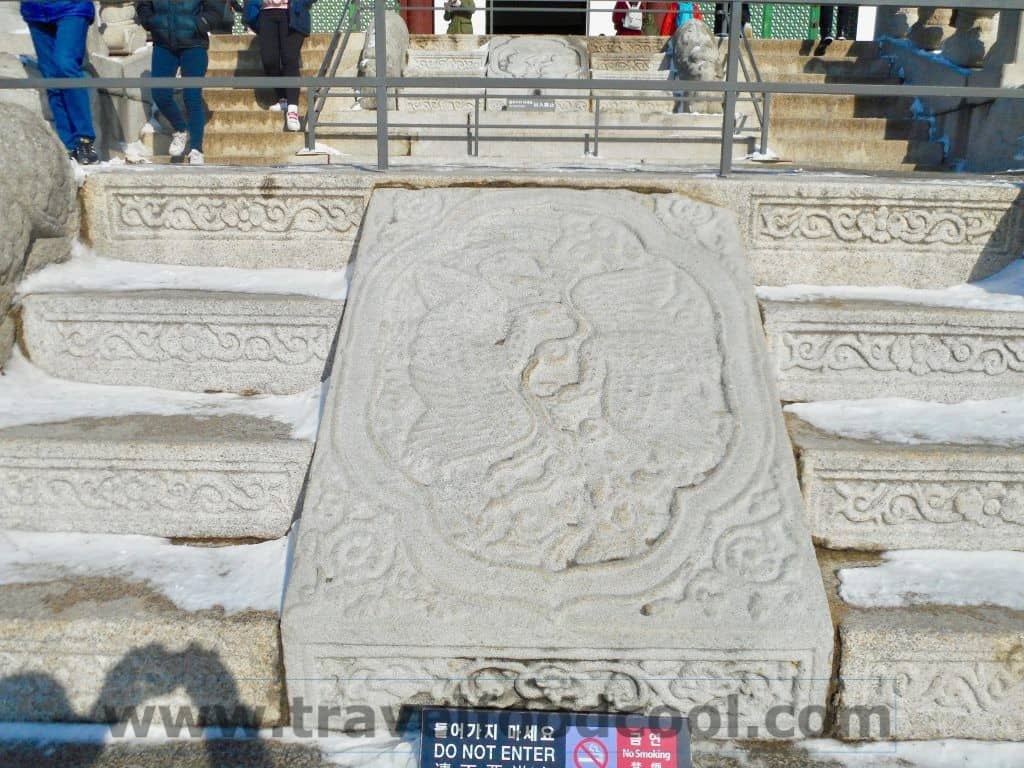
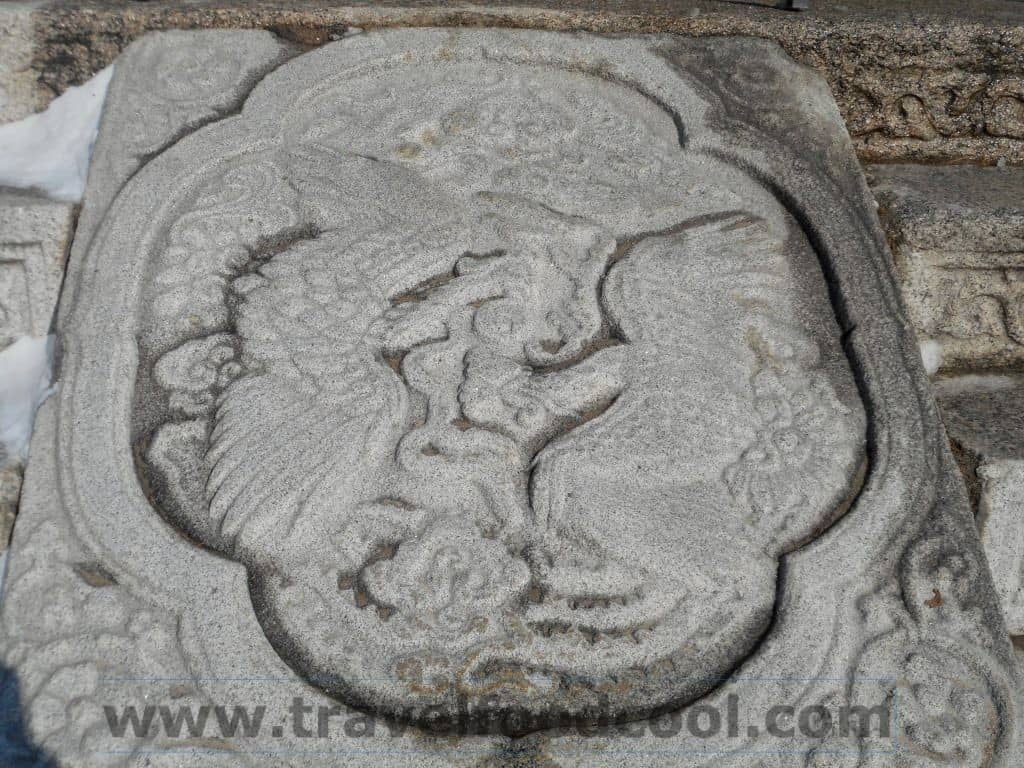
The Throne Room was where the King would pass legislation and receive visitors. The background is a painting featuring the Sun (King), Moon (Queen), Mountains (the land of Korea), Trees (the Ministers) and a Waterfall (people of Korea). The sun, moon, mountains, trees and waterfall also symbolize long life.
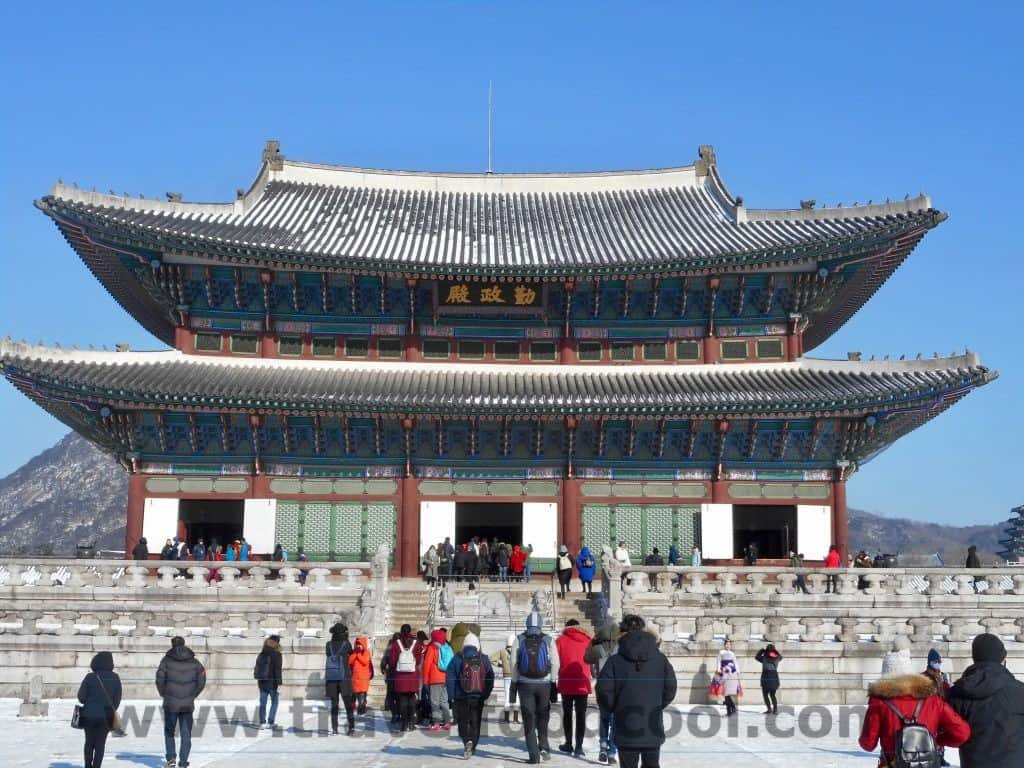
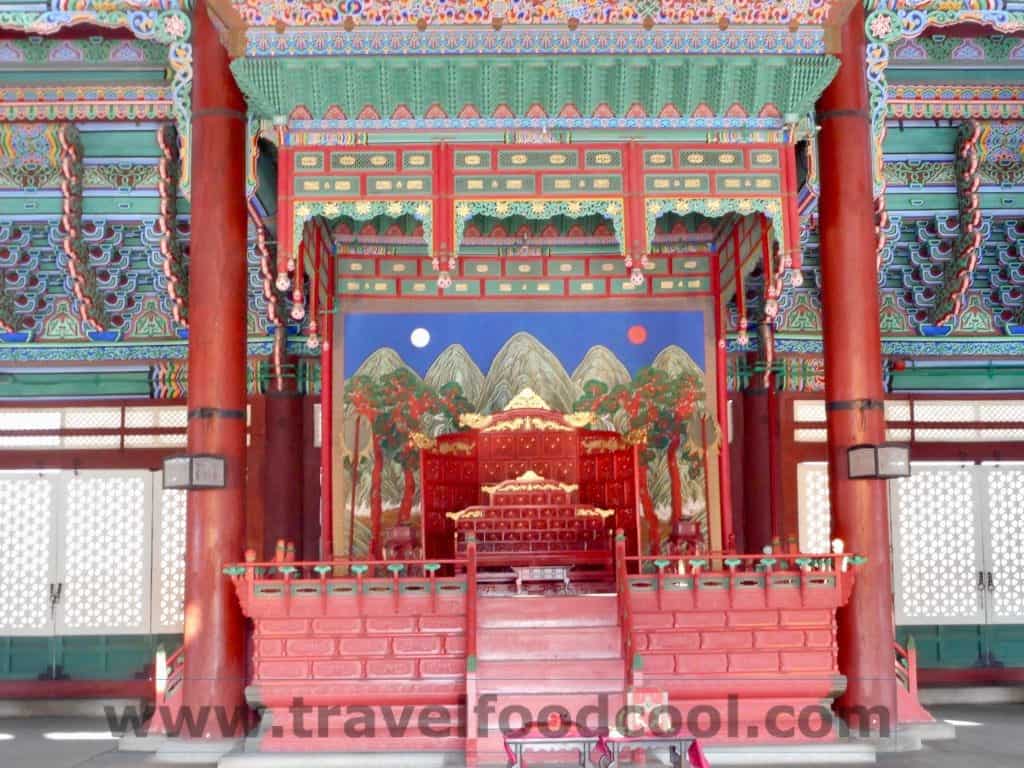
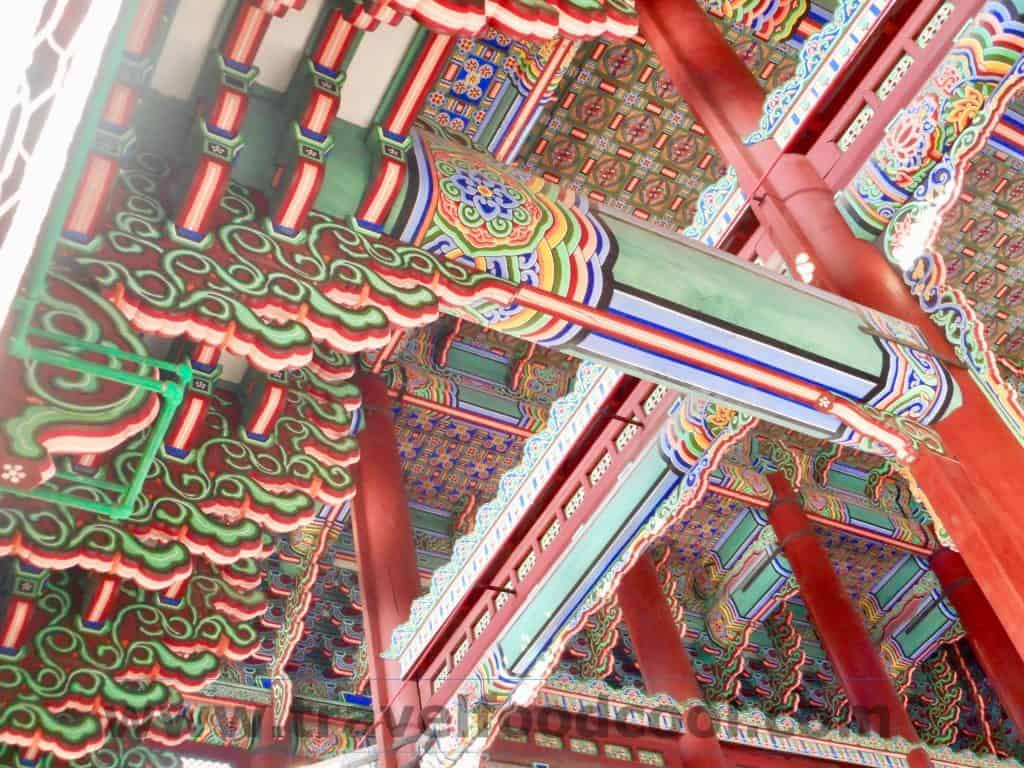
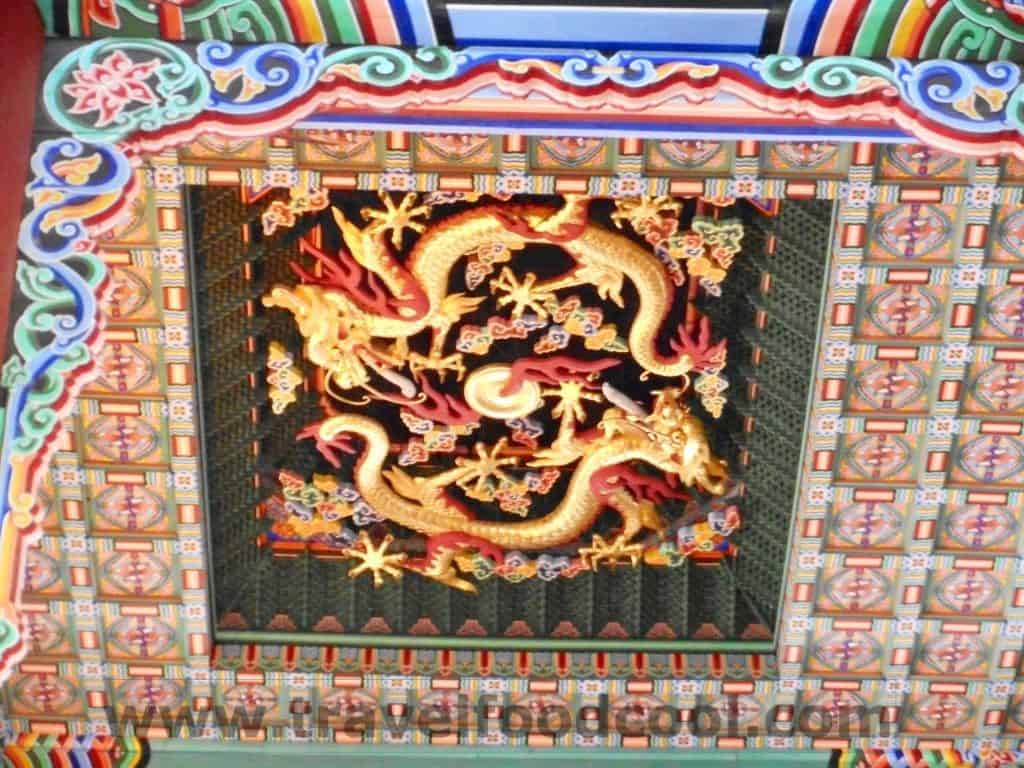
Right behind the Throne Room is the King’s State Room (Sajeongjeon Hall). This was the king’s office, where he would sit and ponder important state matters before making decisions. In the mornings, it was the place where he held his cabinet meetings.
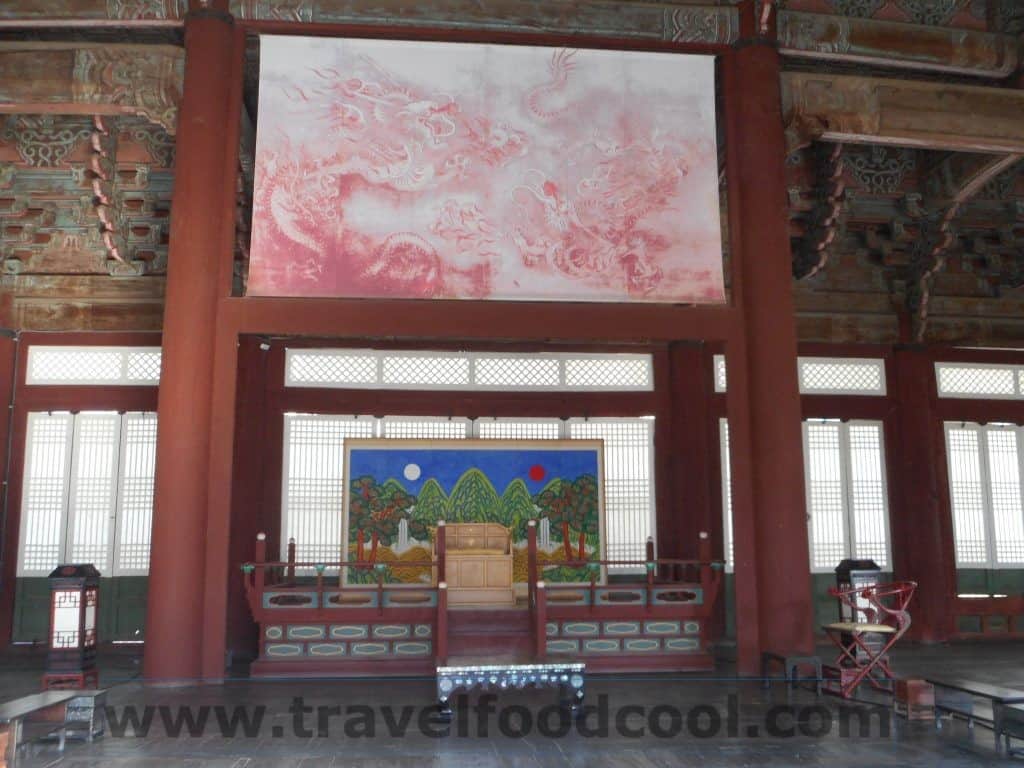
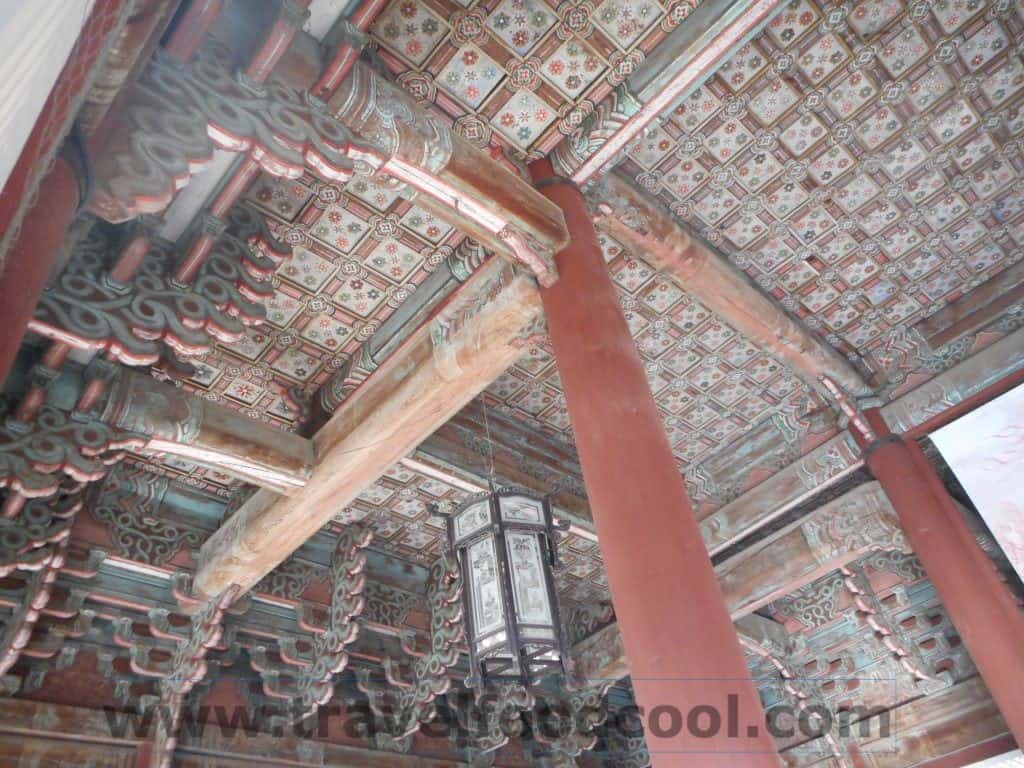
The King’s bedchamber (Gangnyeongjeon) is an interesting room as there is no superfluous furniture. The reason there is no furniture, we were told, was to prevent assassination attempts. The thinking was that there was nothing in the room for a want-to-be assassin to hide behind. This was the King’s private space where he would read or rest. The King also attended to state affairs here with his retainers. There are an additional nine rooms for the ladies of the court.
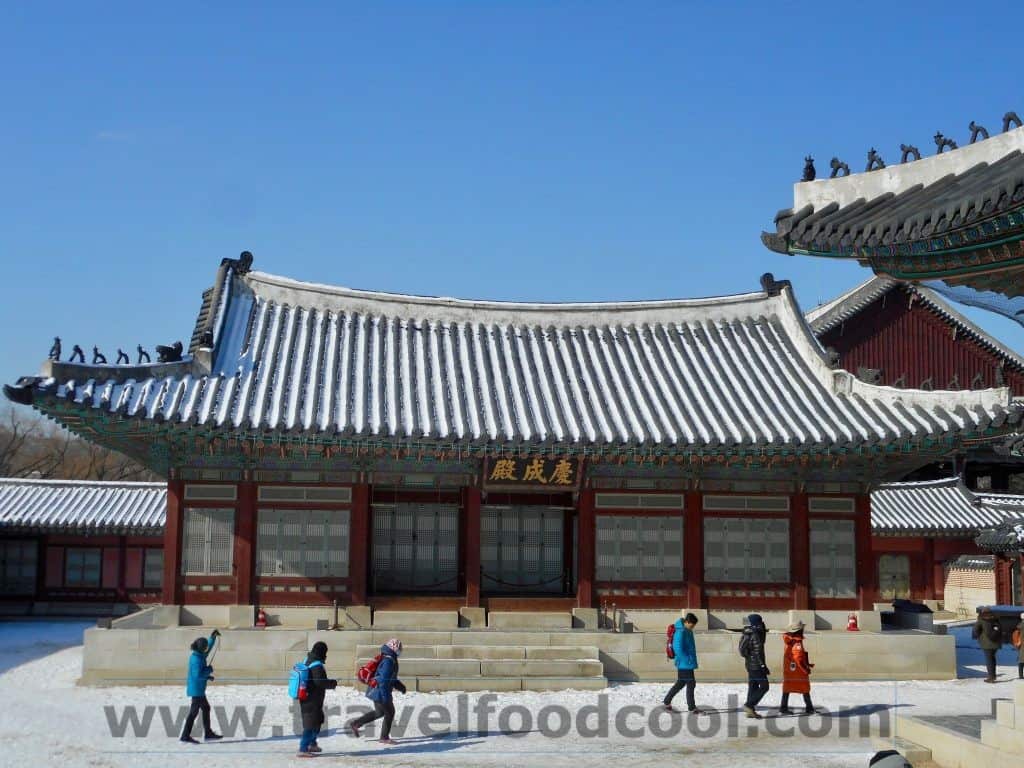
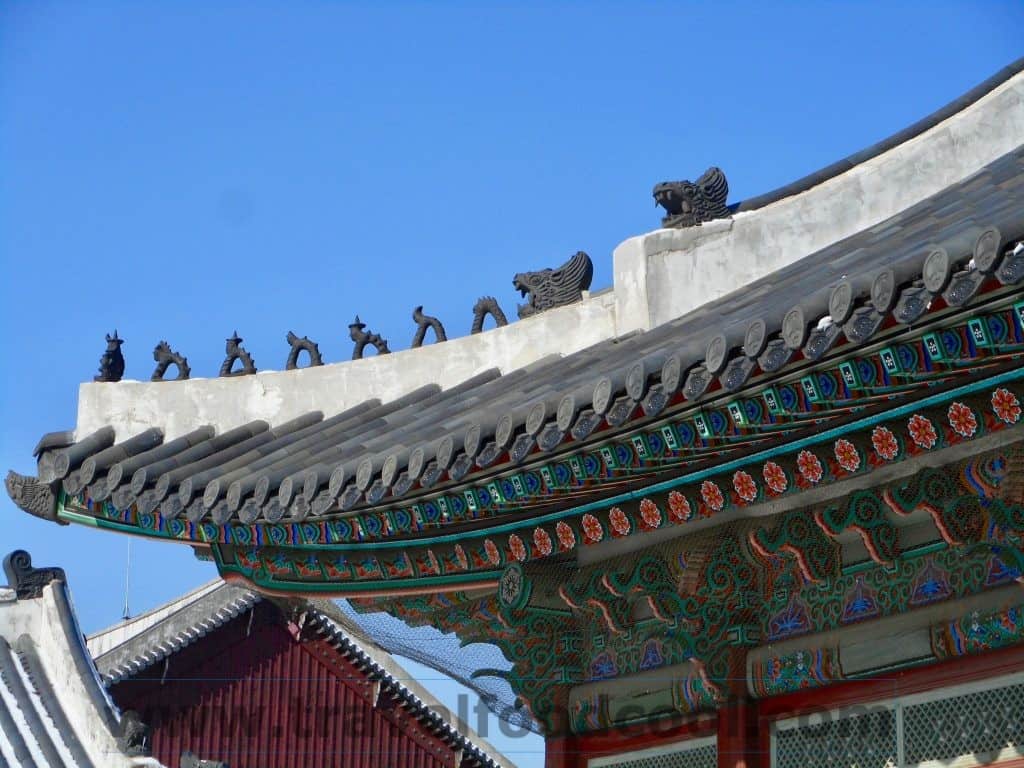
The Queen’s bedchamber (Gyotaejeon) is similar to the King’s, in the sense that it is very sparse. You know which room you are in if you look at the painting. In the Queen’s chamber, the painting is missing the moon (which symbolized the Queen), but has the sun in the background to remind her of the King. The Queen oversaw household operations from her room in Gyotaejeon. The building is thought to have been built in 1440.
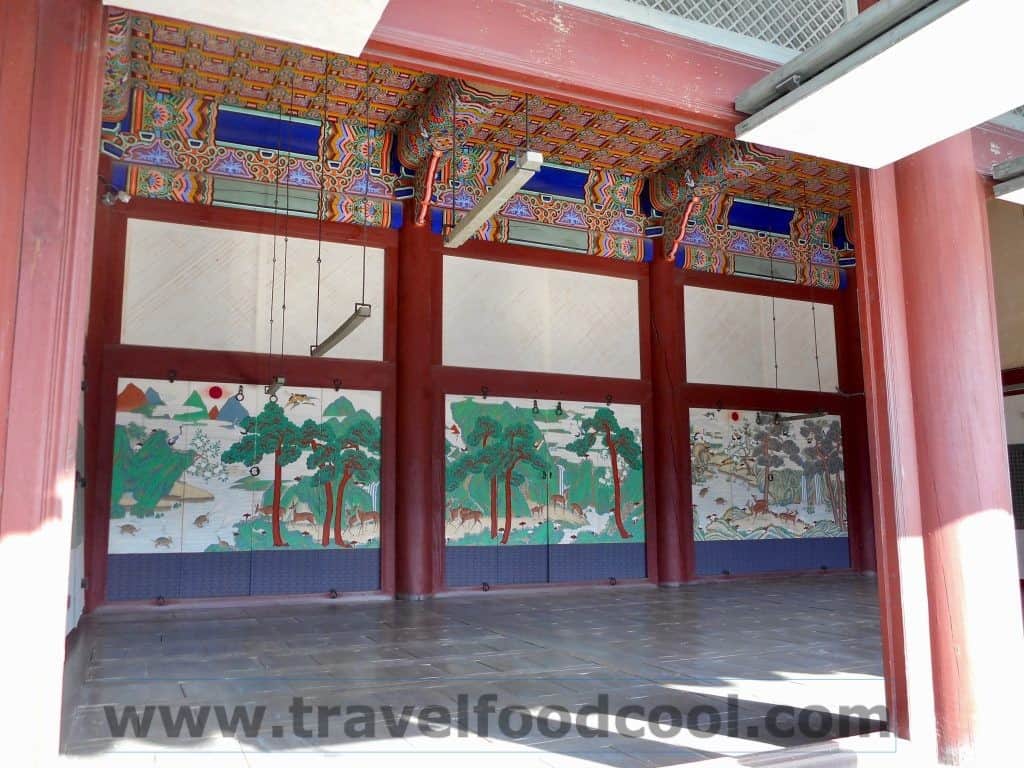
Behind the Royal chambers sits the Queen’s royal garden. Throughout the garden, you can see symbols of fertility such as trees, mountains, water, moon and sun (similar to the symbols in the Throne Room and bedrooms). These symbols could even be found decorating the many smokestacks.
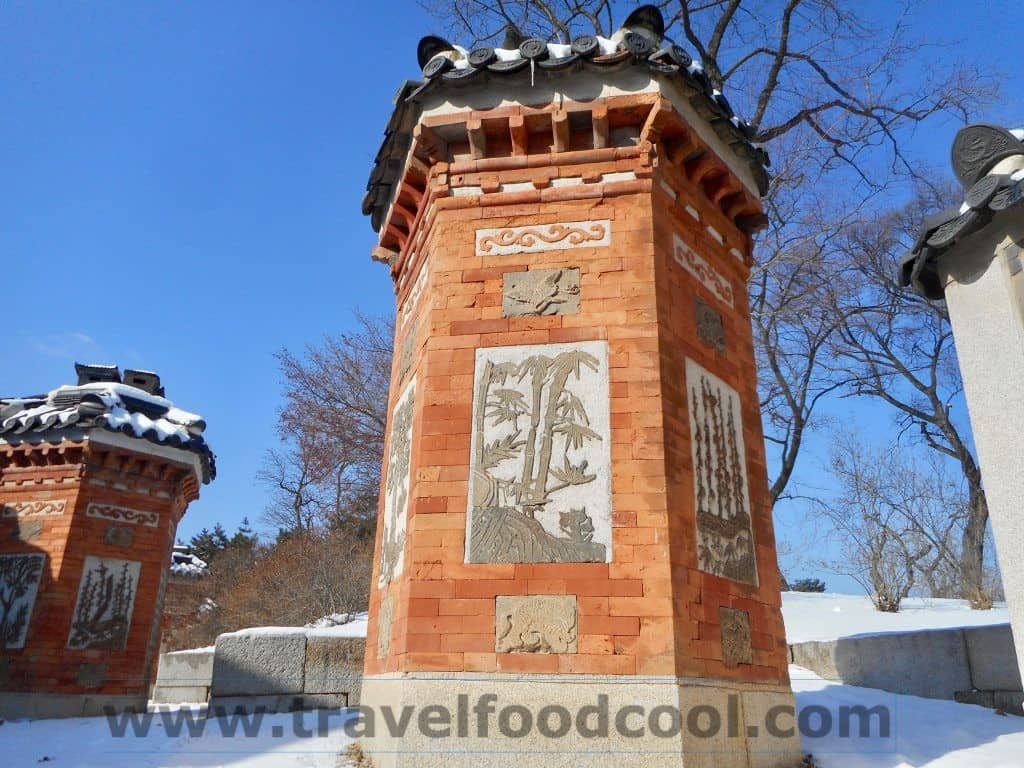
The Hyangwonjeong Pavillion and the garden showcase the Koreans’ love of symmetry and balance. The Pavillion is set in a circular plot of land inside a square-shaped “lake” of water. The square is said to represent the earth and the circle is said to represent the sky. Together, they achieve harmony. This spot was popular with the King and Queen who would stroll around this pavilion as well as sail boats on the water.
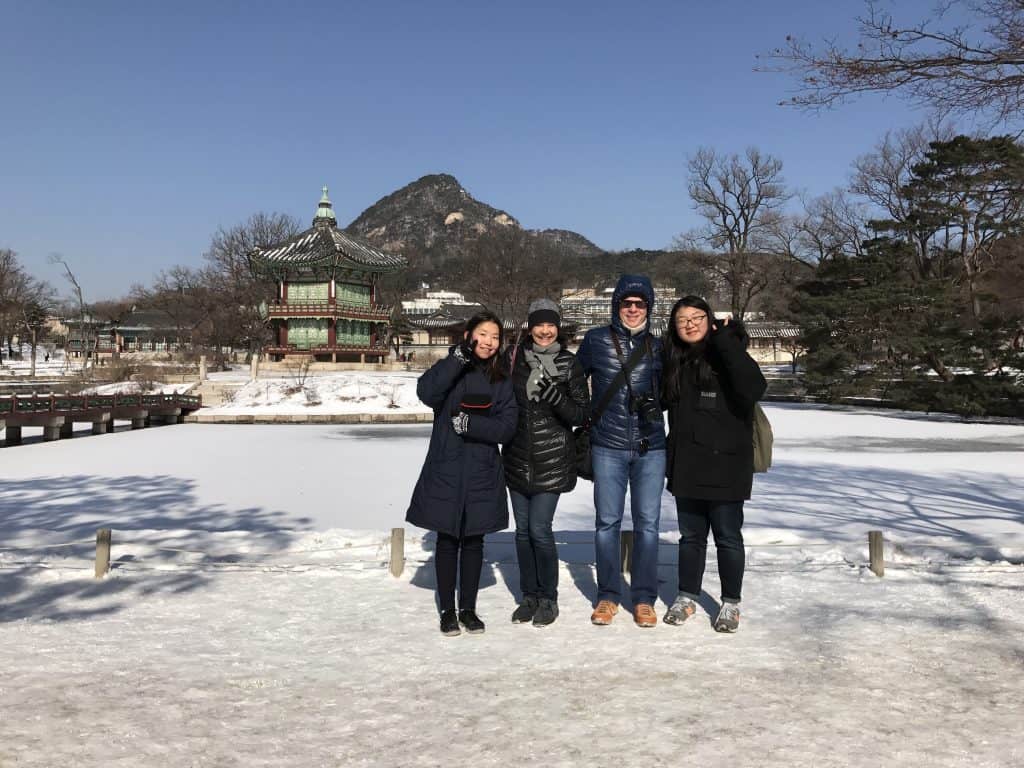
Looking for a party? Gyeonghoeru Pavillion was the place you would go if the King threw a royal banquet and you were invited. Originally built in 1412, Gyeonghoeru Pavilion was burned down by the Japanese in 1592 during the Imjin War. The current structure (1867) is a square on the outside with 40 round pillars on the inside (again harmony), on a man-made lake. Up until recently (spring of 2017), Gyeonghoeru Pavillion had limited visitability and only allowed 50 people a day. While you will still need to make an advance phone call or online reservation (see information at end of post), it will now be open April – October 3 times a week and 4 on weekends. A 30-minute Korean-only tour is included.
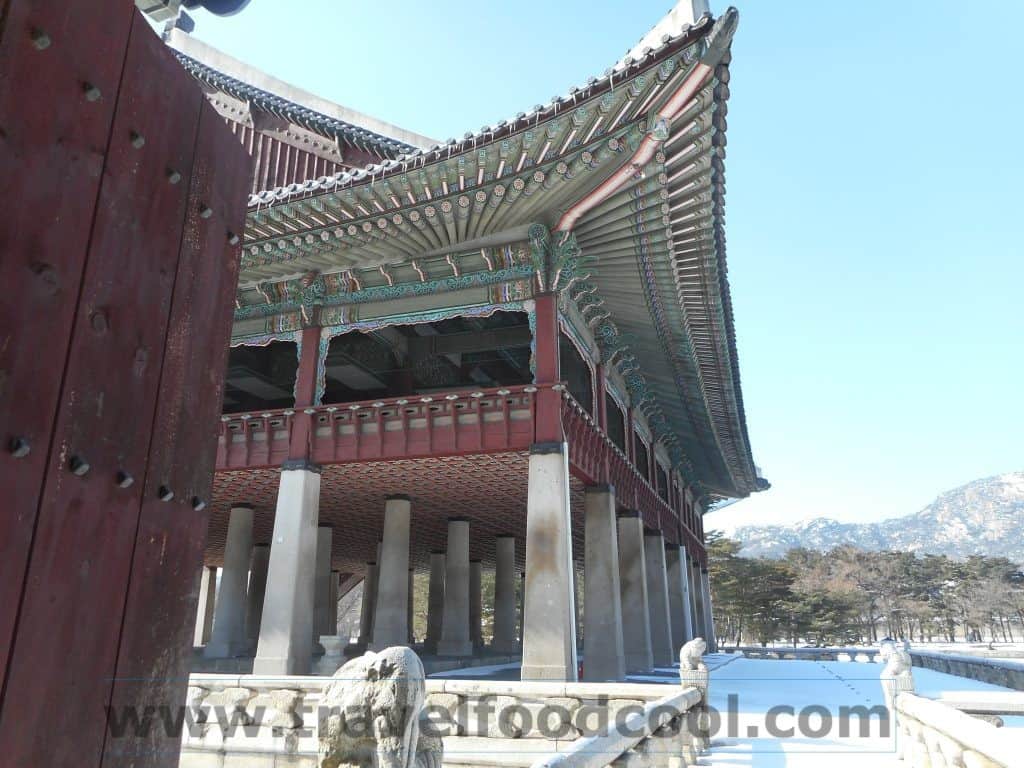
The pavilion is a national treasure and is one of the only structures at the palace that survived the Japanese occupation of Korea (1910 – 1945). The pavilion symbolizes heaven, earth, man and time.
It was fascinating to talk to the students about other things besides the palace. We saw many younger people dressed up in historic costume. We found out that this is now a fashion trend with younger people. If you dress in historic costume, you get into the palace for free. Teenagers/young adults will rent costumes and then walk around and take photos. (Which actually make for some great photo ops.)
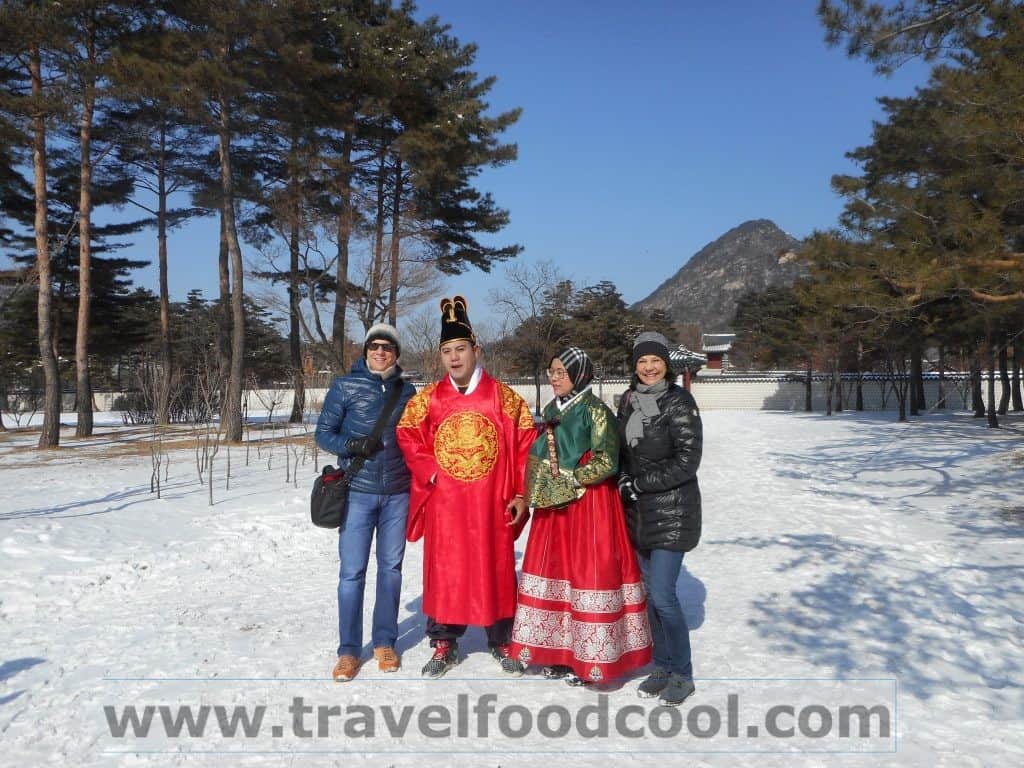
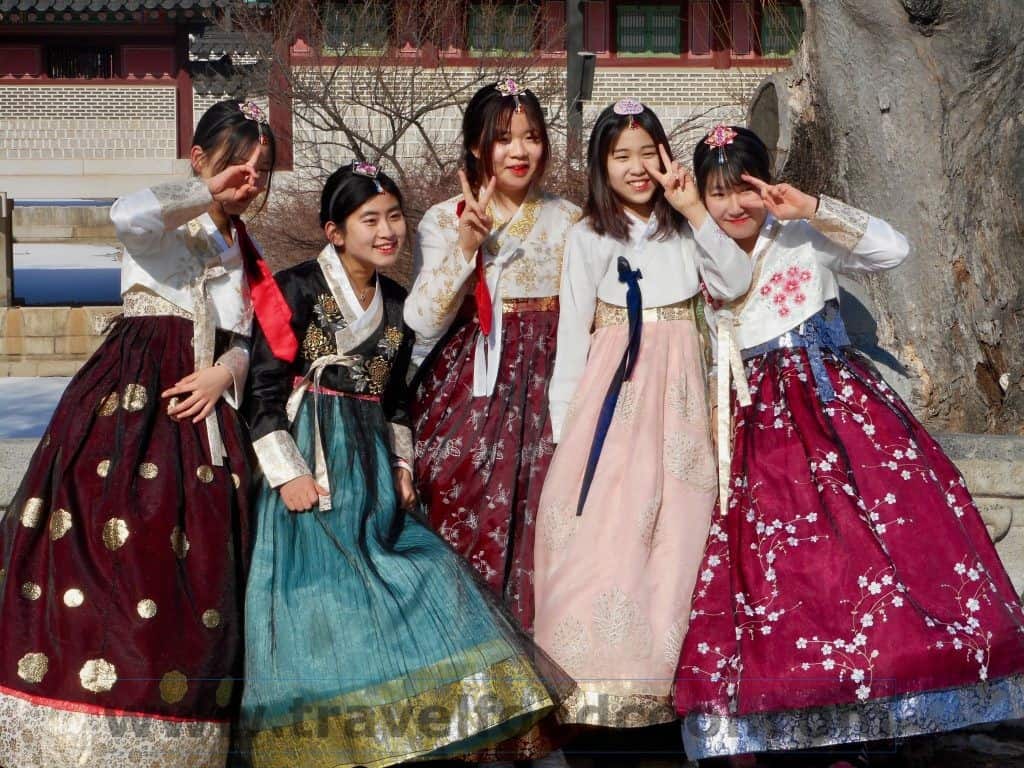
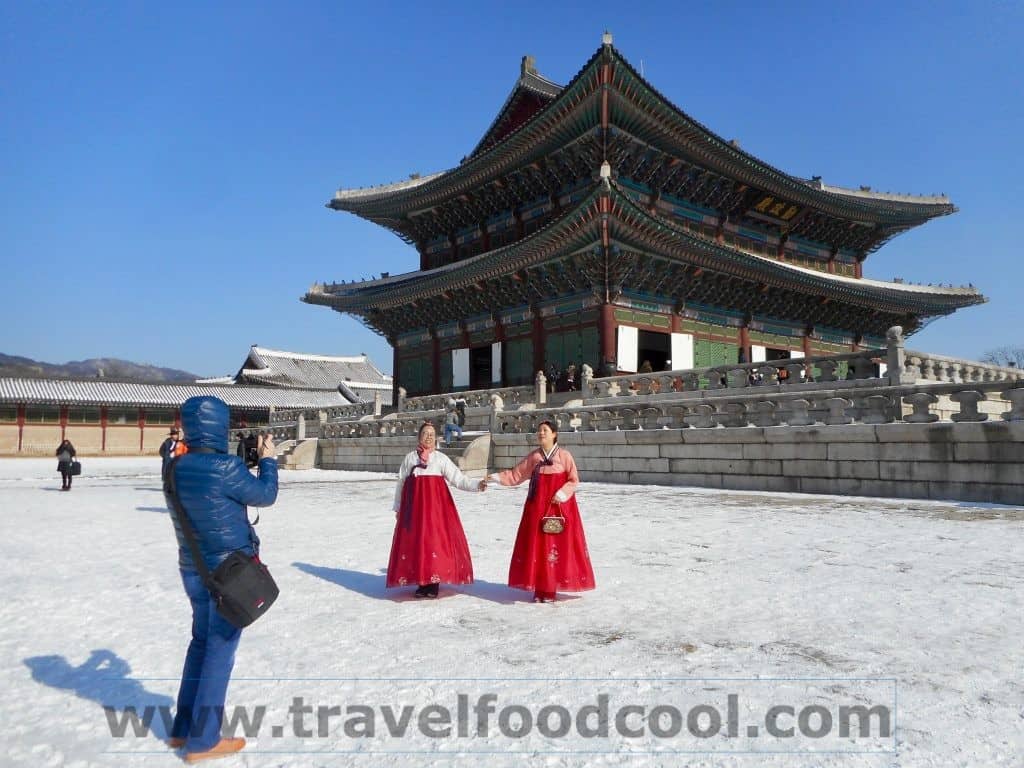
It was certainly interesting speaking with Sandy and Jeongeun to get their views on the North/South Korea situation. Given the unfortunate threats of their next door neighbour, people in South Korea practise the same duck and cover drills that Americans did in the 1960s during the Cold War. Gas masks are found throughout the city and in subway stations. Fingers crossed that North Korea “plays nice” during the Olympics.
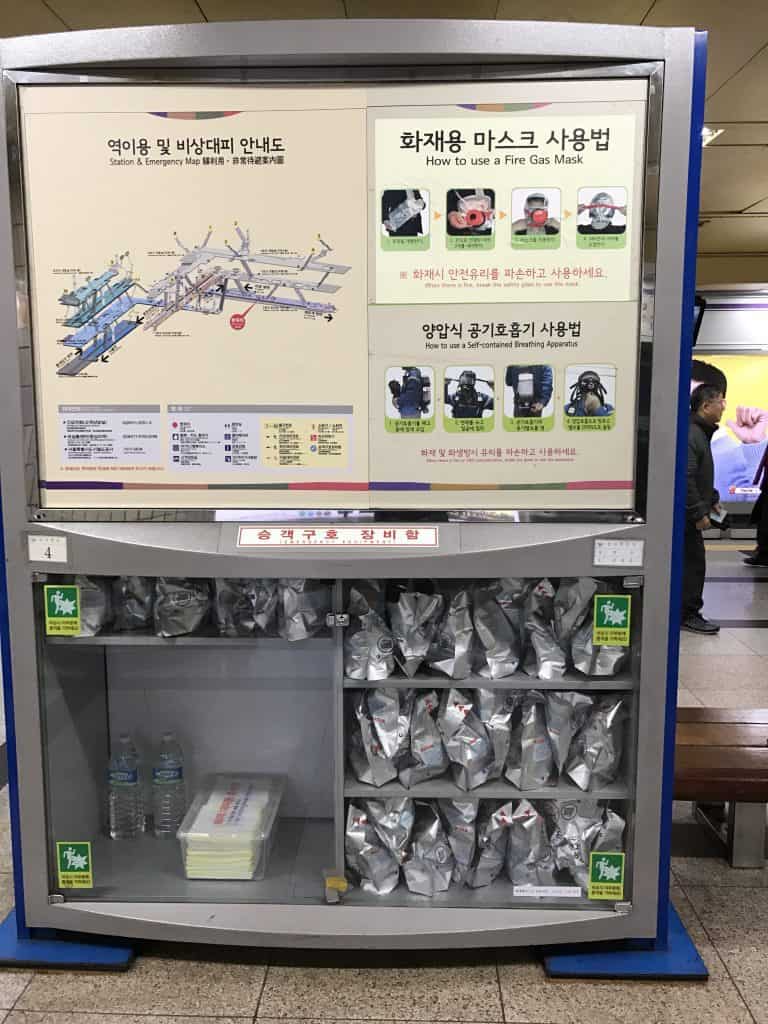
You would probably not be surprised to hear that there is also no love lost in South Korea for the Japanese. Besides the destruction and burning of countless national treasures, there were several occupations, forced slavery, abduction and raping of women during the war. Many feel that Japan is not doing enough to apologize and acknowledge the atrocities committed by the Japanese military.
South Korea is definitely standing up for herself now. There was a protest near our hotel the day we arrived – a little overwhelming to say the least, as when we emerged from the subway to the street there were thousands of people as well as hundreds of police. We asked about the protest. Sandy told us that every week “there was a group shouting” to get rid of the President. The protests must have worked. President Park Guen-hye was removed from office in March 2017.
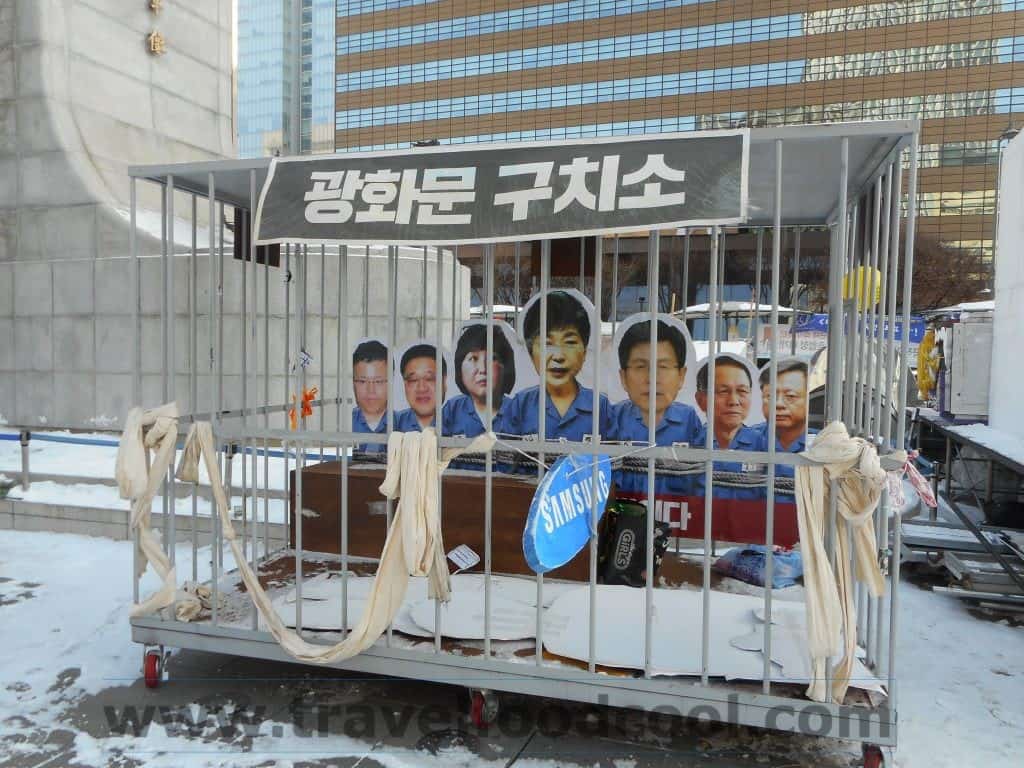
While touring the outdoor palace in the frosty cold may not have been the ideal way to see it, we really enjoyed seeing the palace and spending time with Jeongeun and Sandy to learn more about the palace and their lives in South Korea.
행복한 발렌타인 데이 (Happy Valentine's Day!)
Where: 161, Sajik-ro, Jongno-gu, Seoul (Gyeongbokgung Station (Seoul Subway Line 3), Exit 5.); When: November-February 09:00-17:00/ March-May, September-October 09:00-18:00/ June-August 09:00-18:30 (Last admission: 1 hr before closing) CLOSED TUESDAYS
Gyeonghoeru Pavilion Admission (Reservation required) When: Open April – October 10:00; 14:00; 16:00 (11:00 weekends)
Reservation method: Online reservation via Palace website (www.royalpalace.go.kr – Korean, English) during open period 1~6 days in advance


